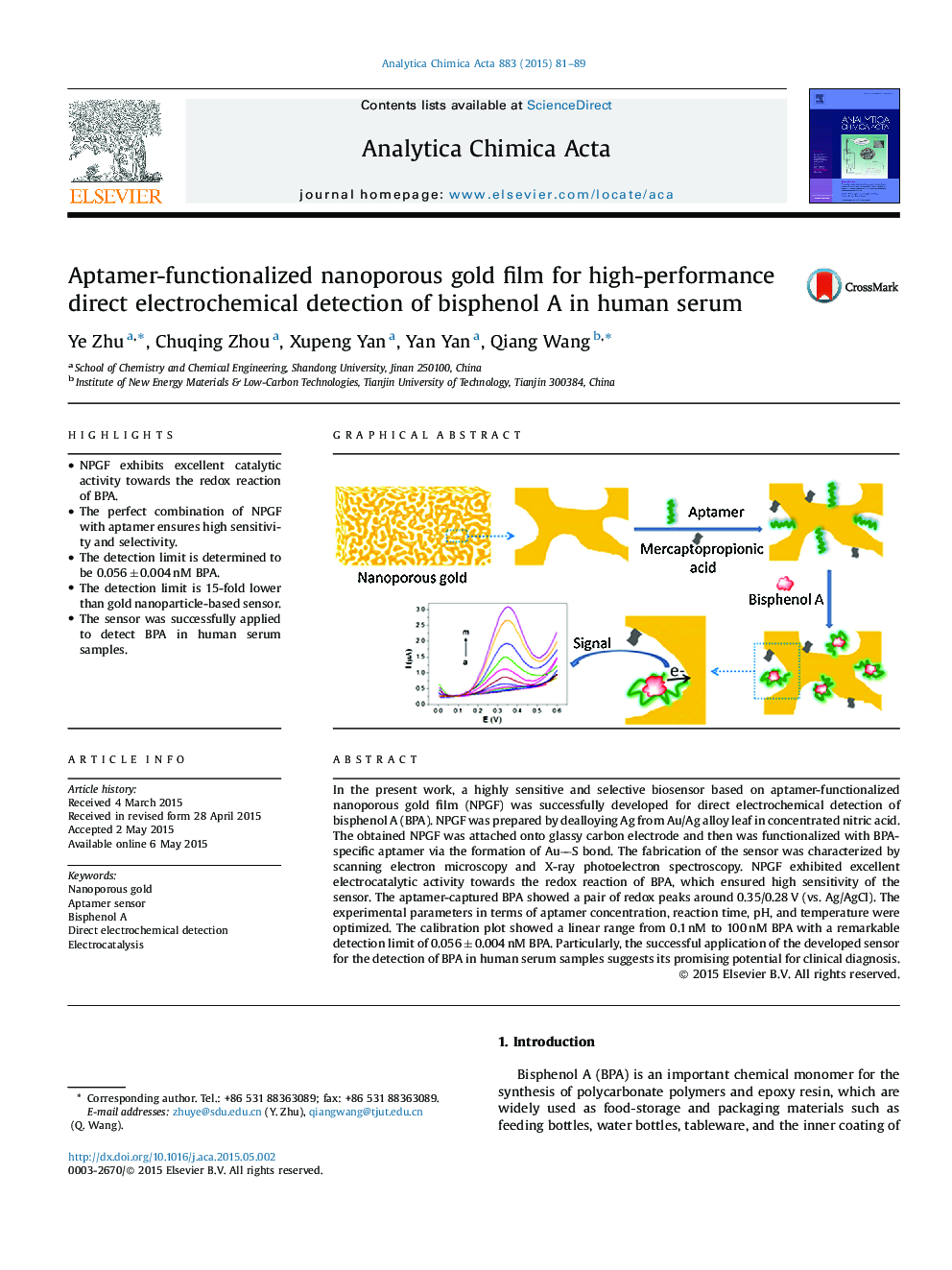| Article ID | Journal | Published Year | Pages | File Type |
|---|---|---|---|---|
| 1163807 | Analytica Chimica Acta | 2015 | 9 Pages |
•NPGF exhibits excellent catalytic activity towards the redox reaction of BPA.•The perfect combination of NPGF with aptamer ensures high sensitivity and selectivity.•The detection limit is determined to be 0.056 ± 0.004 nM BPA.•The detection limit is 15-fold lower than gold nanoparticle-based sensor.•The sensor was successfully applied to detect BPA in human serum samples.
In the present work, a highly sensitive and selective biosensor based on aptamer-functionalized nanoporous gold film (NPGF) was successfully developed for direct electrochemical detection of bisphenol A (BPA). NPGF was prepared by dealloying Ag from Au/Ag alloy leaf in concentrated nitric acid. The obtained NPGF was attached onto glassy carbon electrode and then was functionalized with BPA-specific aptamer via the formation of AuS bond. The fabrication of the sensor was characterized by scanning electron microscopy and X-ray photoelectron spectroscopy. NPGF exhibited excellent electrocatalytic activity towards the redox reaction of BPA, which ensured high sensitivity of the sensor. The aptamer-captured BPA showed a pair of redox peaks around 0.35/0.28 V (vs. Ag/AgCl). The experimental parameters in terms of aptamer concentration, reaction time, pH, and temperature were optimized. The calibration plot showed a linear range from 0.1 nM to 100 nM BPA with a remarkable detection limit of 0.056 ± 0.004 nM BPA. Particularly, the successful application of the developed sensor for the detection of BPA in human serum samples suggests its promising potential for clinical diagnosis.
Graphical abstractFigure optionsDownload full-size imageDownload as PowerPoint slide
